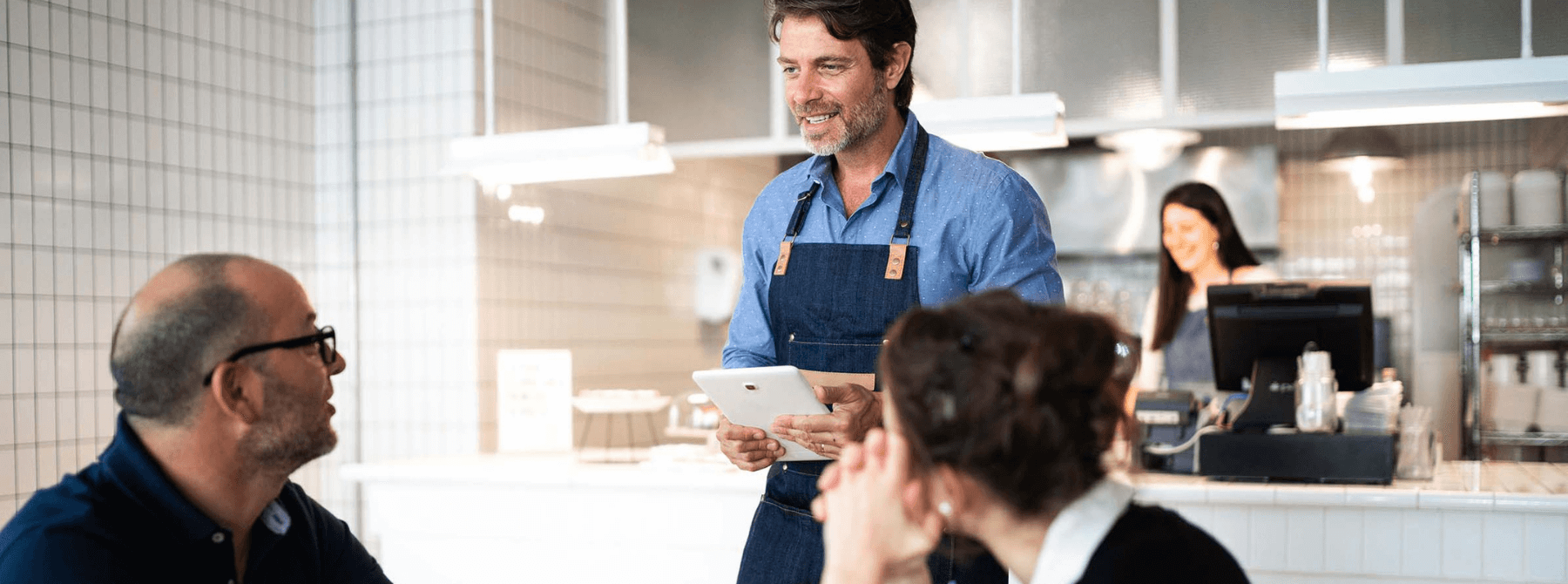
Becoming an Experience-led Company: Part 2
This is part two of our four-part series for how to transform your business to thrive in the Experience Economy.


Experience is the organizing principle of the global economy. Changes in technology have driven exponential growth in consumer expectations, and brands are taking notice. Perhaps most compelling is the fact that SAP now identifies experience as the organizing principle of the global economy and states that solving the experience gap is a $1.6 trillion problem. In short, the experience economy matters to every business, whether they realize it yet or not.
Experience is the Key to Your Most Valuable Opportunities
Here at Rightpoint, we spend a lot of time thinking about experience because mastering it is the most important part of transforming a business around the needs of a human being. It’s a fascinating and nuanced area of study that is often misunderstood.
Strong experience solutions are created by strategically leveraging data, design, and technology. Experiences created with these foundational building blocks are not only better for customers and employees, but they also deliver powerful business outcomes. To become an experience-led company that is able to envision and execute such experiences, you need to develop the right mindset, organizational structure, and team.
Experience is the New Power Driver of Brand Loyalty
Historically, brand loyalty was driven primarily by a consumer’s perceptions of a brand, and those perceptions were in turn influenced by the brand’s messaging, personality, and mission. People were loyal to particular brands because they felt an affinity with a brand’s vision or attitude and were willing to pay a premium to be associated with that identity.
In the experience economy, actions speak louder than words. It’s no longer so much about what brands say or stand for as it is about what they do—how they interact with and treat their employees and customers. Talk, as they say, is cheap. In an environment of such intense consumer empowerment, it’s time to walk the walk.
Experience is the great equalizer – no brand is exempt.
This paradigm shift in how businesses think about customer experience affects every brand out there, from the biggest to the smallest, the ones with the longest history to the startups. As examples, let’s look at two of the biggest, most well-known global brands. Starbucks is a great example of transforming a commodity—coffee—into an experience. And Disney is a great example of leveling up an already amazing experience by applying data, design, and technology in game-changing ways.
Starbucks
For many (many!) people, coffee is a ubiquitous part of the morning routine. People really look forward to that first cup of the day, but not always to the task of procuring it. Starbucks is continuously evolving that experience for their customers, using creativity and digital tools to increase delight and loyalty while decreasing friction. Their app, which is one of the most regularly used in the restaurant industry, allows them to scale their experience across all their locations. By combining data-driven infrastructure with heuristic and AI-driven insights, they can recreate the personal experience of having your local barista brew your regular as soon as you step in the door no matter where you are in the country.
One of their recent innovations was the introduction of mobile payments, which allowed customers to use their phones instead of their wallets to pay for their order. Starbucks then tied a loyalty program into their mobile-pay feature, allowing customers to accumulate Star points, which they redeem for free coffee and discounts on other items. The next natural step was to allow customers to order in advance, which eliminated the hassle of waiting in line. These programs have been so successful that Starbucks is now redesigning most of their locations around meeting mobile demand. Their strategic changes to the digital experience have effectively changed the ergonomics of the lines in their physical stores.
Disney
From day one, Disney has been all about creating magical experiences for families. Their start-to-finish, white-glove approach allows them to script every moment, almost like one of Mickey’s famous films. Disney leverages all kinds of advanced technologies to keep their well-oiled machine running like clockwork. They are the epitome of best in class.
One of the most powerful things about Disney’s experience is that the magic starts even before arrival. Their web and mobile planning and ordering experience is seamless and extremely personalized. And once visitors hit the park, mobile app and MagicBand technology allow them to easily navigate the park, manage meals, pay on the go, and much more.
Just as important, these digital apps also provide Disney with critical data. Using technology, Disney can see where there are bottlenecks in wait times, which rides are most popular, and even details about exactly what visitors liked best about a specific ride. This digital data feedback loop is what enables Disney to continuously improve their physical products and experience.
Experience is Ubiquitous – Big Shifts Can Start Anywhere
The Starbucks and Disney examples also demonstrate how the overall customer experience can be completely transformed by improving what may initially seem like small or insignificant interactions. These companies achieved major competitive advantages not by changing their products, but by changing the experience at specific touchpoints in the customer journey.
It is also important to remember that these kinds of transformative improvements can happen anywhere in a business. Experience goes far deeper than the surface layer of the elements customers interact with directly—marketing, sales enablement, customer service, social media, and so forth. Experience is influenced by every aspect of a business, including all the things the customer never sees—supply chain and order management, the supplier/partner experience, the employee experience, and so on.
Airbnb
With more than 33,000 travel experiences in 192 countries, Airbnb is the undisputed leader in helping people list, discover, and book unique accommodations at almost any destination. They took what was a commodity purchase—booking a hotel room—and transformed it into a beautifully designed and very personal experience. Their award-winning app does all the big-picture things right. From engaging and intuitive onboarding to myriad customization options to the bright and inviting design, the Airbnb app makes travelers and hosts alike feel good about the entire process. Perhaps most importantly, the platform enables very personal, one-to-one interactions between hosts and guests. Hosts can share insider information about favorite neighborhood hangouts and other local secrets. These intimate conversations create an experience that’s as far from booking at a chain hotel as possible.
Chewy
Chewy is an eCommerce retailer catering to pet parents with an extraordinary customer experience. What sets Chewy apart from its competitors is the special little touches. From handwritten welcome postcards for new customers to bereavement bouquets for customers who have lost a beloved pet, Chewy’s customer service team consistently goes the extra mile to deliver highly empathetic and personalized interactions that wow customers.
Experience is DNA-level Deep
In other words, experience isn’t a shiny coat of paint. Creators of great experiences recognize that everything is connected and make sure that each and every touchpoint helps forge a meaningful human connection. That goes for employees and partners as much as for prospects and customers. Done right, the whole of the experience is much greater than the sum of its parts. Done right, experience creates a halo effect that drives a virtuous cycle in which customers want to buy from you and people want to work for you and vendors want to partner with you. Download our POV to learn how to become a company that is able to envision and execute exceptional digital experiences.


